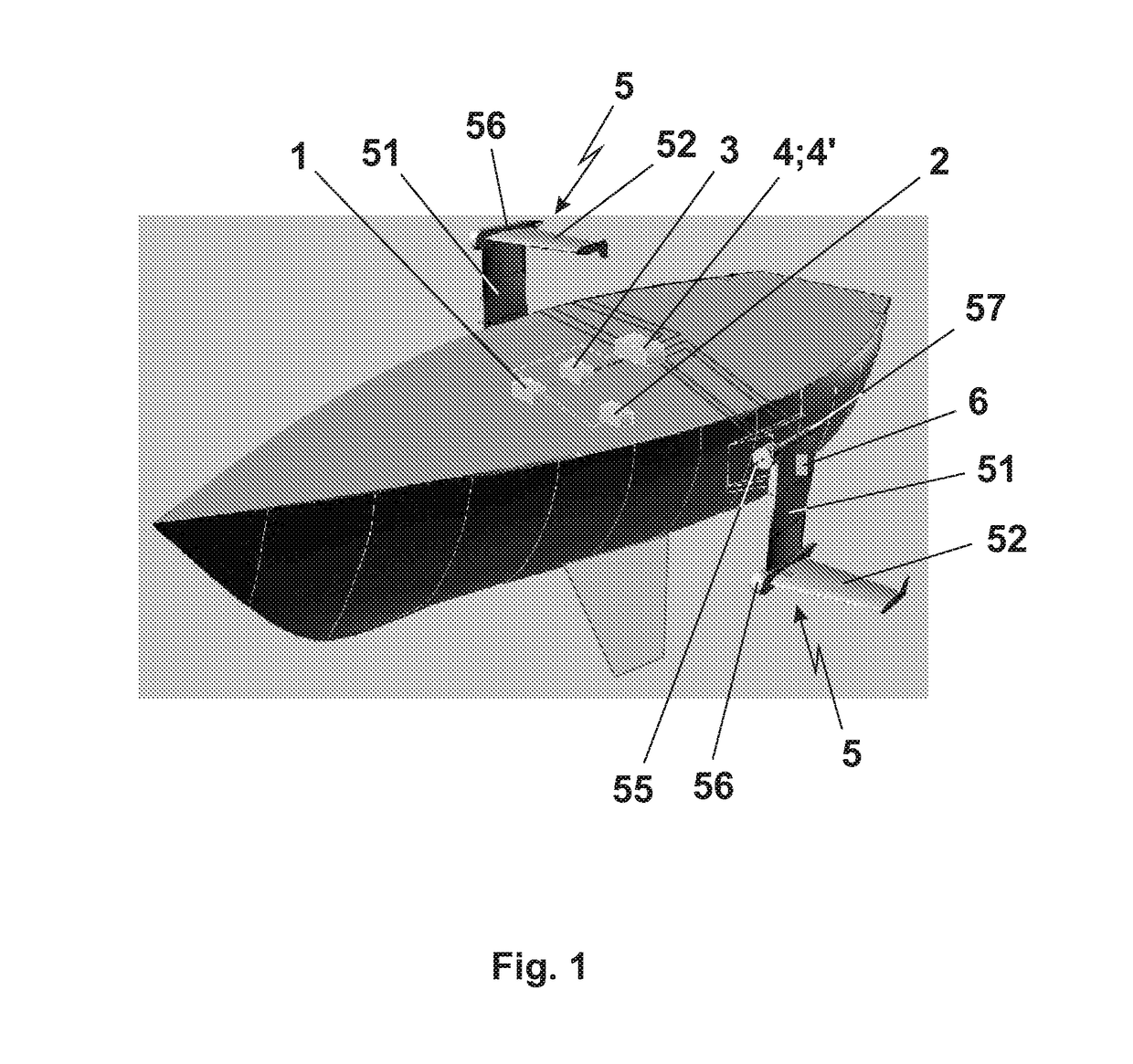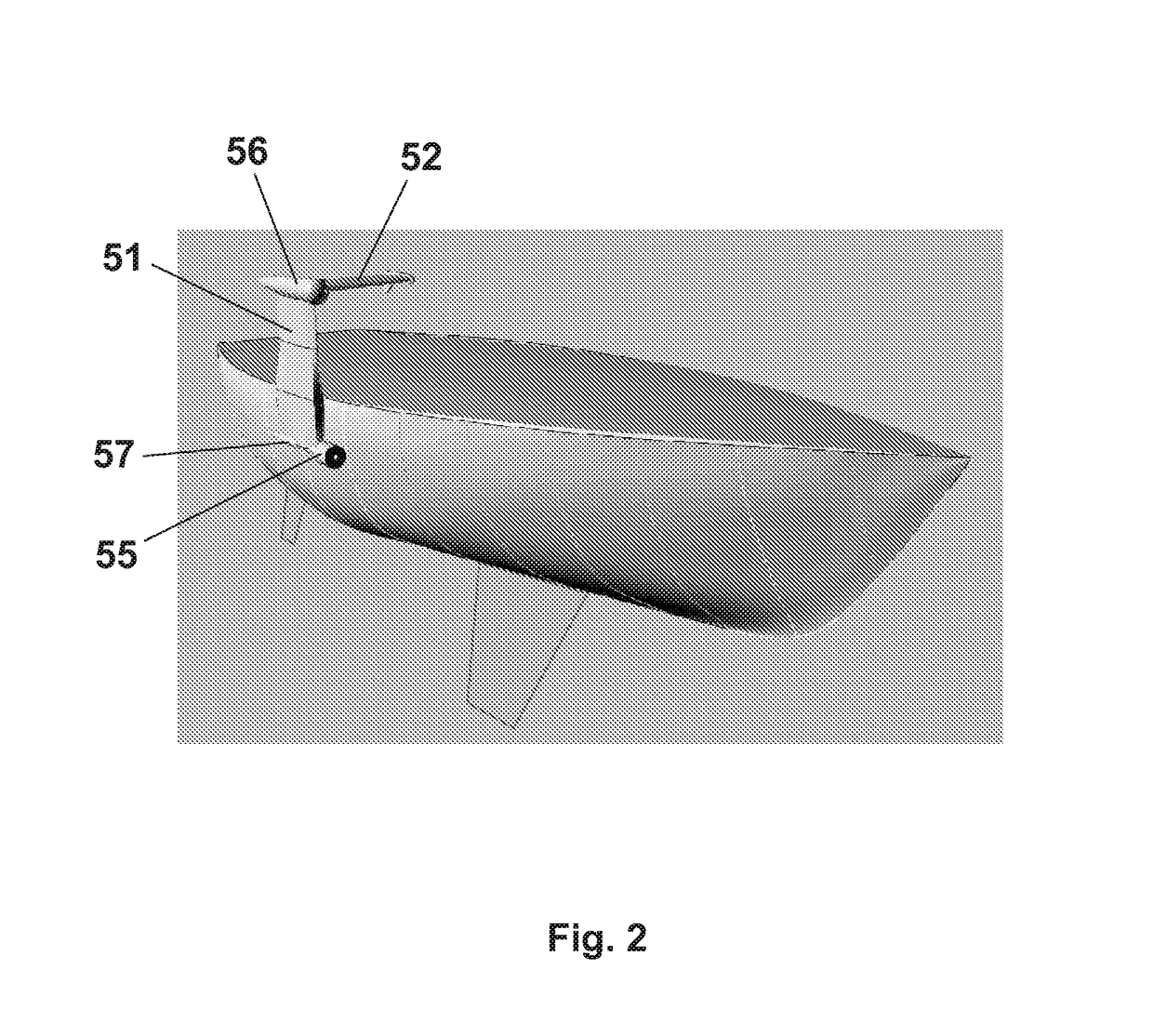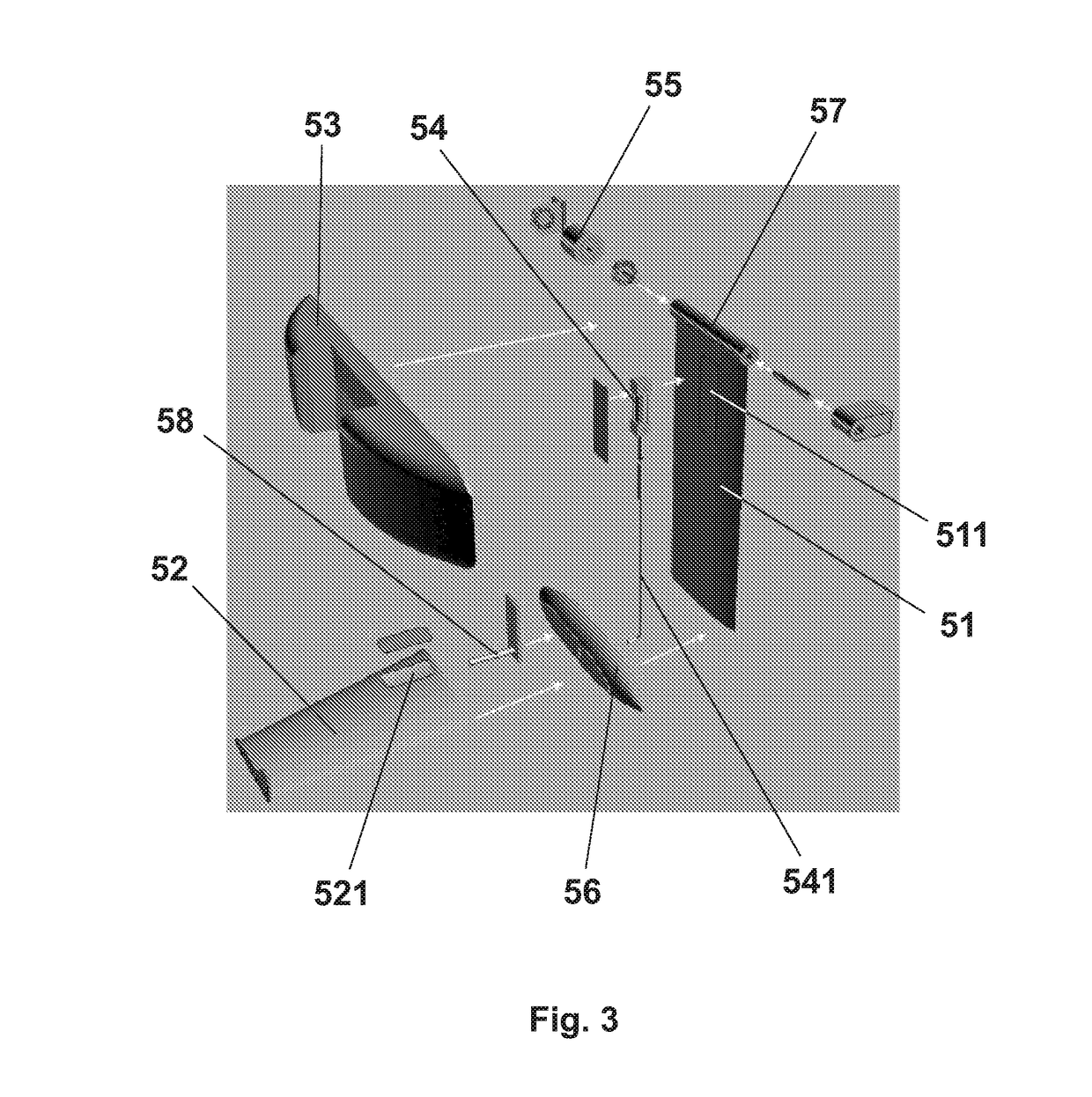Over the centuries, the sail navigation has always been faced with stability problems due to the generation of more ballast and low weight (in the bottom or at the
keel) in order to support strains of the sailing plan thereof.
When sailing under a weak wind, all that weight added to the keel sinks the hull even more, generates a larger wet surface in the live works and is good for nothing, since the weak wind does not
heel over the boat.
Deep keels have a large wet surface (requiring internal volume to fill same with ballast), thus generating friction and reducing the speed even more;
The hull also sinks with the weight of the keel on its bulge, thus extending the wet surface and holding the boat, thus reducing its performance;
When the boat starts to
heel over, the hydrodynamic profile of the conventional keel starts to work outside the perpendicular of the water line plan, thus substantially reducing its side sustentation efficiency, so that the boat stalls in the wind and generates vortices in the water, which vortices dissipate the power, thus reducing the boat speed;
When the boat approaches a port,
cove or marina, the depth of the keel makes it difficult to dock because the draught of the boat is extended to three or more times the draught of the hull.
Thus, many ports cannot be accessed, and the commanders cannot seek shelter under adverse climatic conditions because they cannot approach such ports;
Another problem of the conventional keel is that its hydrodynamic profile is symmetrical to the center line.
In the fixed keel and center helm system, when the boat heels over, the vector center of all aerodynamic forces of the sails that promote the propulsion of the hull (sum of all forces that push the sailboat ahead) and the center of
hydrodynamic resistance of the hull (sum of all the forces that hold the sailboat so that it does not increase its speed), are well unbalanced in relation to the boat center line.
On the other hand, the
hydrodynamic resistance center of the hull is unbalanced windward due to the inclination of the hull and the large resistance of the keel.
When the boat is heeled over by the wind, the helm must be used all the time and, since its axis is not perpendicular to the water line plan, the performance of the helm is awfully bad, thus decreasing the speed of the boat.
This type of sailboat still has some inconveniences as compared to those reported in the previous case.
This type of sailboat also has some inconveniences shown in the designs above.
The task of changing the fluid of a board with another fluid can be delayed, thus complicating the application of the system;
The tank bulkheads, even when are not being used as the ballast, have their own weight, thus hindering the displacement of the boat.
More weight is almost always not a good measure.
Technical faults in the tilting mechanism of said keels bring about a higher cost for installing same, and also broken devices have generated and continue to generate serious accidents when navigating in the
open sea;
Currently this system is known as the fastest and efficient available in the market for one-hull boats, but unfortunately the cost for acquiring and installing same is high; and
Another complex matter is the (excessively high) draught of said boats, as well as the need to place same in huge cradles when they are taken out of the water.
When the boat is in the port, its draught is huge.
A high draught is a serious problem, since small ports and marinas are faced with environment issues and huge dragging cost when the depths thereof are increased;
Said rebounding, pivoting or tilting keels have a wet surface and drag resistance, but they do not cooperate to laterally sustain the boat for supporting the side pressure of the sail plan, and therefore bowline keels to be handled by the
crew need to be installed ahead of the mast bowline;
The system for pivoting or tilting system the keel is too expensive and requires strength no matter how hard the engineers work.
Briefly, the result is too much weight, a moving dead load, a high draught, and bowline keels that need to be lowered and lifted.
However, this type of sailboat still presents some inconveniences such as:
The DSS system does not provide any sustentation to compensate the sail plan pressures.
The draught of the boat is still very large, thus complicating the access to marinas as well as to park the boat out of water;
Another serious problem in the DSS is that it is not possible to change the
angle of attack of the profile.
The DSS wing profile, by virtue of a problem in the concept of the design, because it is not deep (it cannot be deeper, since it does not allow to arrange the installation on the bulge of boat hulls) sometimes it arises partly or wholly in the surface, thus causing
waves and turbulence that reduce the speed of the boat as well as diminish the sustentation of the wing;
Briefly, its installation occupies a lot of inner space in the boat, and is difficult to be installed in the already existing boats;
Although it has been named as a dynamic stability system, it is useless when one navigates in widely spread winds or
stern winds;
Due to the fact that the wing is flush with the surface (close to the surface) there is a problem of
cavitation on the back thereof.
When low immersed, the
cavitation is difficult to control;
Similarly, when the boat has the sails fourled and is powered by the engine, there is no improvement in the stability and the rocking is not attenuated, thus causing discomfort to the passengers and members of the
crew.
 Login to View More
Login to View More  Login to View More
Login to View More 


